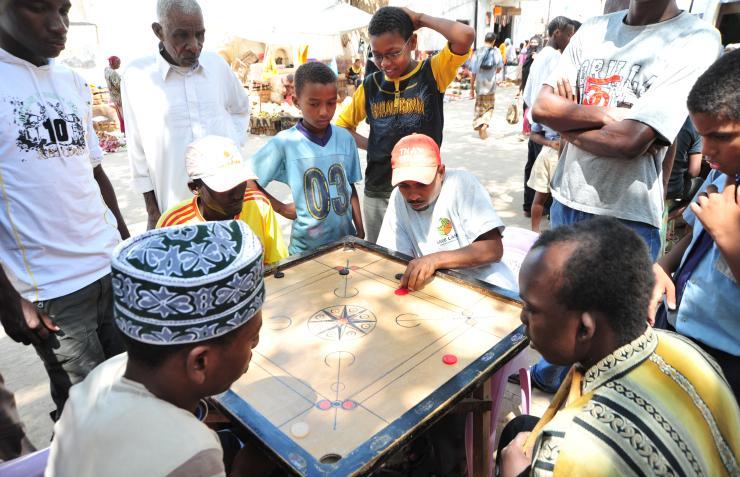People living on the coasts of the Indian Ocean have long been connected by trade. Indian, Persian and Arab merchants sailed along the coasts to buy and sell their wares. They also founded a string of outposts, some surviving to this day.
It goes without saying that, through the centuries, there have been intermarriages and cultural exchanges. It is no surprise, then, that there is a certain similarity in food, architecture, and techniques like shipbuilding. One other area in common is that of games, especially board games.
Visitors to the island of Lamu are always struck by the contrast between the laid-back attitude of islanders and the hectic life around the waterfront. Fishermen are busy mending nets and preparing their boats, fishmongers to buy and sell the catch. An array of artisans are hard at work in their workshops.
Yet, when the day’s work comes to a close, many of these people find their way into the backstreets of the small town. There, a new aspect of Swahili culture is at play. Under the shadow of the tamarind trees in market square, and in the adjoining alleys, scores of people turn to keram.
This is a board game originally from India – where it is known as carom – a curious mix of billiard and table shuffleboard. It is now played on the shores of the Indian Ocean, but also in faraway places such as the UK and North America.
The game is played on a square wooden board of varying size – usually 75 cm long, but there are some reaching 1 meter – at each corner, there is a hole (pocket) with a net to collect the disks that fall into it. The objective of the game is to use a ‘striker’ disk with a flick of the finger to make contact with, and move lighter disks called ”men”, which are thus propelled into one of the pockets. The disks are coloured to distinguish opponent teams.
A red disk represents the Queen, this is the most powerful keram piece. When players set up the board, the Queen is placed at the centre. Pocketing the Queen adds points to the player’s total score.
The player must pocket the Queen and subsequently pocket a man of the player’s own colour. If the player fails, the Queen is replaced at the centre of the circle. If a player pockets a man of the opposing team, the Queen is awarded to the opponent, and if a player or team fail to pocket the Queen when they finish all their men, they lose the match. To pocket Queen and men, players use a larger and heavier disk – the striker. Crossing the diagonal lines on the board by coming in touch with it, or pocketing the striker is a foul.
A player committing a foul must return to the board one man that was already pocketed. If a player pockets his striker, he has to pay a penalty. Talc powder is used to make the board smooth, which makes the pieces slide at incredible speed.
Keram is a social affair. The players are engrossed in the game, but find the time to answer the jibes of spectators. Those watching the game, most of them waiting for their turn to play, comment on the latest throw or what should have been done; some jokingly pull the leg of a player or highlight why things are not going well in their life. There is almost a tension between the seriousness of those playing and the lightness of those watching.
The game is played by children and adults alike. However, while among children and girls are admitted to the game in the streets, among adults one never finds a woman.







